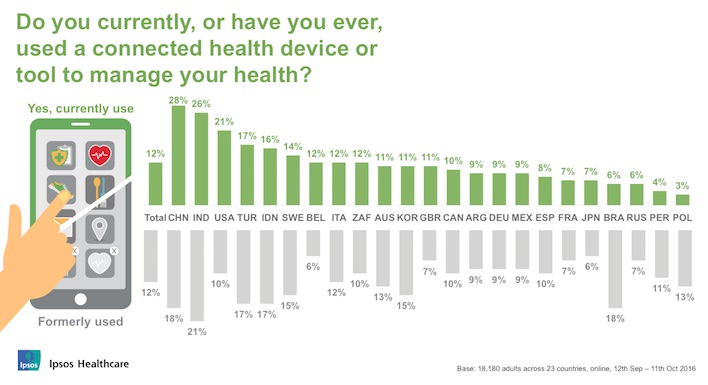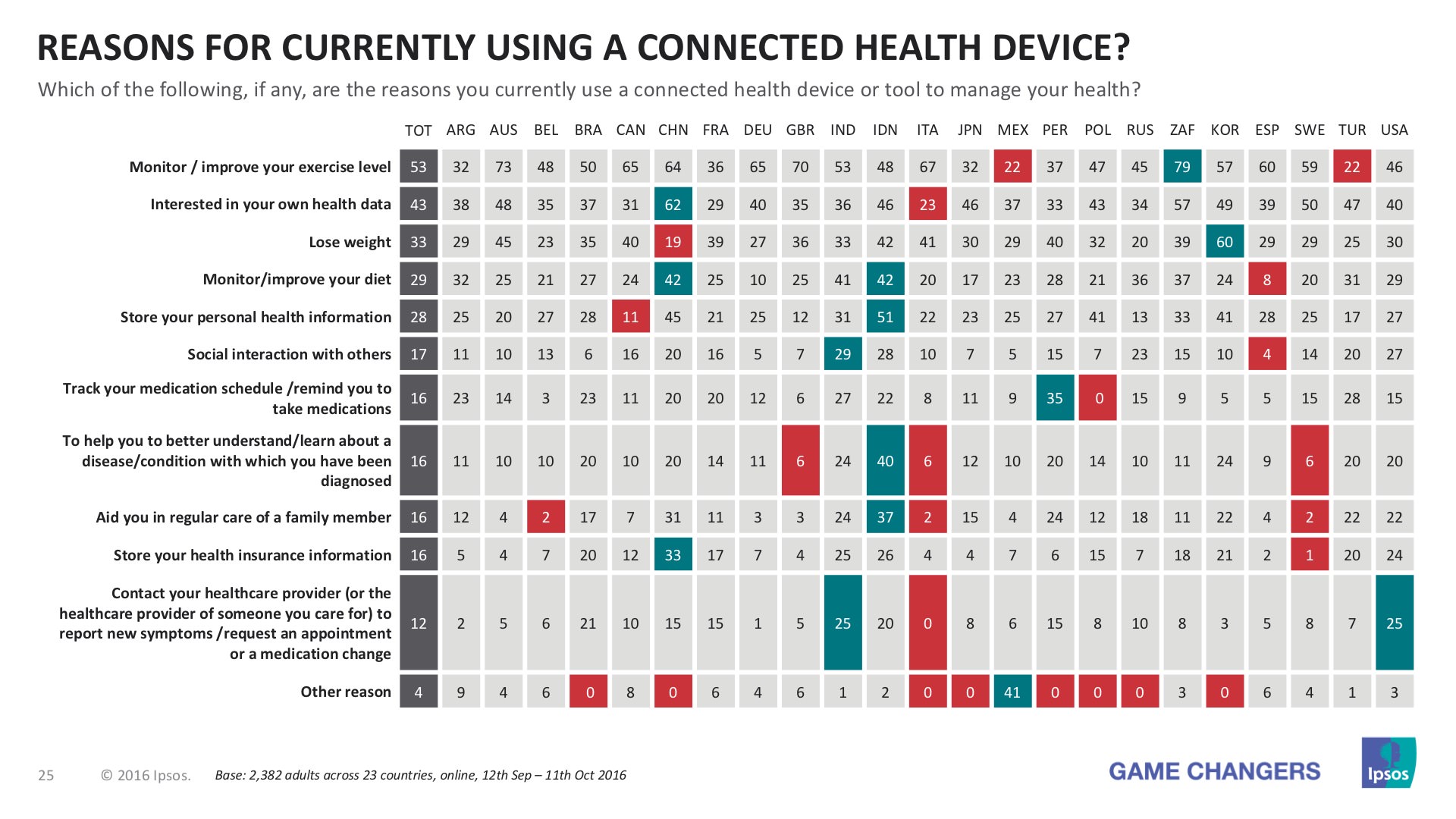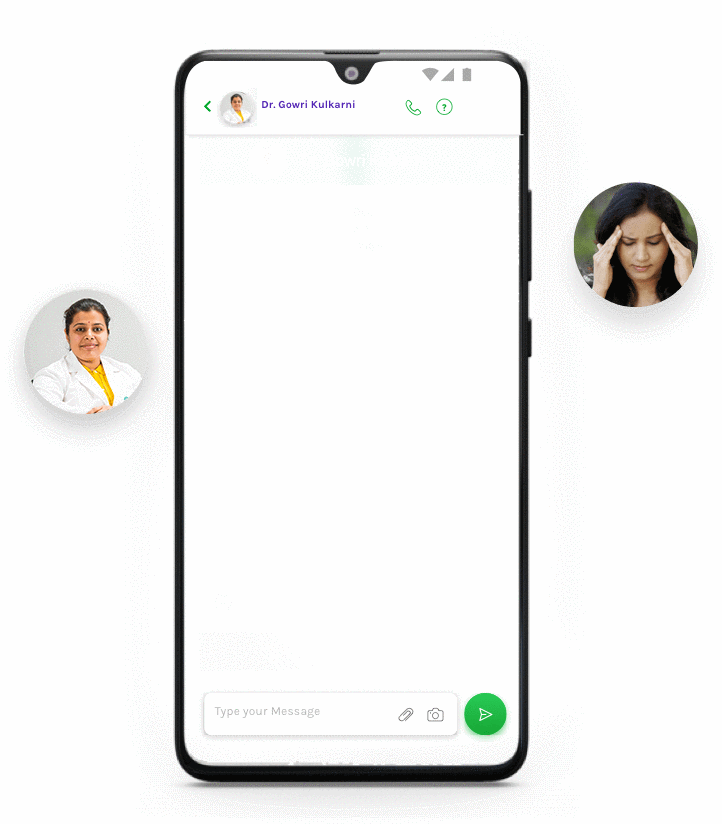Connected Health is taking flight worldwide. As technology has advanced, we have gained more significant insights into health and discovered more advanced ways to blend emerging technology with the patient experience, to offer more effective and more personalized solutions. We’ve also humanized the experience with improved design, and scaled it through the smart application of technology.
Connected health is a socio-technical model for healthcare management and delivery by using technology to…maximize healthcare resources and provide increased, flexible opportunities for consumers to engage with clinicians and better self-manage their care.
While here in North America, most are aware of the concept of connected health, we wanted to take a look at how it is being adopted by the rest of the world, and what the attitudes and opportunities look like beyond North America.
Connected Health Global Adoption
In 2016, Ipsos surveyed 18,180 participants across 23 countries to unearth insights into the adoption of connected health devices. From the survey results, it was found that China has the highest adoption rates at 28 percent, followed by India at 26 percent, and the US at 21 percent. Not far behind were Turkey and Indonesia, at 17 and 16 percent respectively.

What’s interesting about these results is not what appears on the surface, but what comes up when seeking an understanding of the underlying motivations for adoption of these devices. While China, India and the US are the biggest adopters, users’ primary application for these devices is in monitoring and improving exercise levels. In contrast, Turkish users were primarily interested in their own health data, and Indonesian users were interested in storing their personal health information on their devices. A common thread across these users is an interest in access to personal health data and information, and the personal empowerment that comes from such access. Adopters of connected health devices are generally interested in knowing more about their health and likewise influencing their health with information and insight.

International Examples
Much of the focus for connected health in North America is on digitizing health records. As of early 2017, 67 percent of all providers in the US reported using an electronic health record (EHR), and in the UK, the NHS has committed to making patients’ records paperless by 2020.
Western countries are not the only places with a focus on digitizing medical records in order to improve the medical process. Africa is one region which has taken great strides in digitization and digital monitoring for healthcare. In Kenya, for example, the distribution and monitoring of antiretroviral medication compliance has increased by 11 percent through the digital monitoring of patients with a connected smartphone application. In Botswana, the government has deployed a mobile solution that monitors malaria outbreaks, and reduces response time from months to minutes. And Mali, has introduced a mobile application that provides pregnancy information to expecting mothers, which has helped to reduce the maternal mortality rate by 30 percent.
Meanwhile in India, where access to treatment can be difficult, connected health solutions are beginning to link citizens with doctors and treatments that they would not have otherwise received.
One such example is DocsApp, an Indian based health-tech startup that has created a mobile platform where citizens can consult a specialist within 30 minutes, making much needed medical assistance accessible to those who may not otherwise have access, or who have to travel to seek treatment.

Global opportunities
In the Ipsos study noted above, participants in countries with low adoption rates of connected health devices identified similar reasons as to why:
- The cost of connected health devices is high
- Unfamiliar with what wearables or other connected health devices can do for them
Collectively, there is an opportunity for healthcare professionals, insurers, innovators, and business leaders to educate users on the benefits of connected health devices. Benefits of which include monitoring exercise and improving fitness, but also go way beyond this, including (but not limited to):
- Gaining the ability to contact health care providers to report new symptoms, request appointments, or change medications.
- Tracking medication schedules, and setting reminders for users or their loved ones to take their medications.
- Helping users to better understand and learn about diseases or conditions that they have been diagnosed with.
The motivation to band together to learn and educate is significant. With more connected health devices and services comes more data from users, and this can feedback to healthcare professionals to support better care. The data can also be used to develop better solutions to improve access to healthcare and health outcomes.
A more connected world should mean a healthier world, with a greater quality of life and improved health outcomes, if we can successfully apply connected health solutions across the healthcare ecosystem in North America and beyond.
A Booming Industry
According to ECHAlliance, the connected healthcare market worldwide is expected to reach $150 billion by 2024.
In the connected health devices market, North America currently holds the largest market share, and is anticipated to grow at a compounded annual growth rate (CAGR) of 30 percent from 2016 to 2024. A close runner-up is Europe, with a projected growth rate of 27.6 percent to 2024, followed closely by Africa, with a projected growth rate of 27.5 percent to 2024. Asia-Pacific is also expected to be an important contributor with a forecasted market value of $25.8 billion by 2024. As the demand for connected health technology increases and costs decline, we can expect to see even further market growth and impact from connected health solutions beyond 2024.
In summary, connected health solutions are well positioned to be both accessible and affordable, and to positively impact the lives of citizens worldwide, in even the most remote locations.


